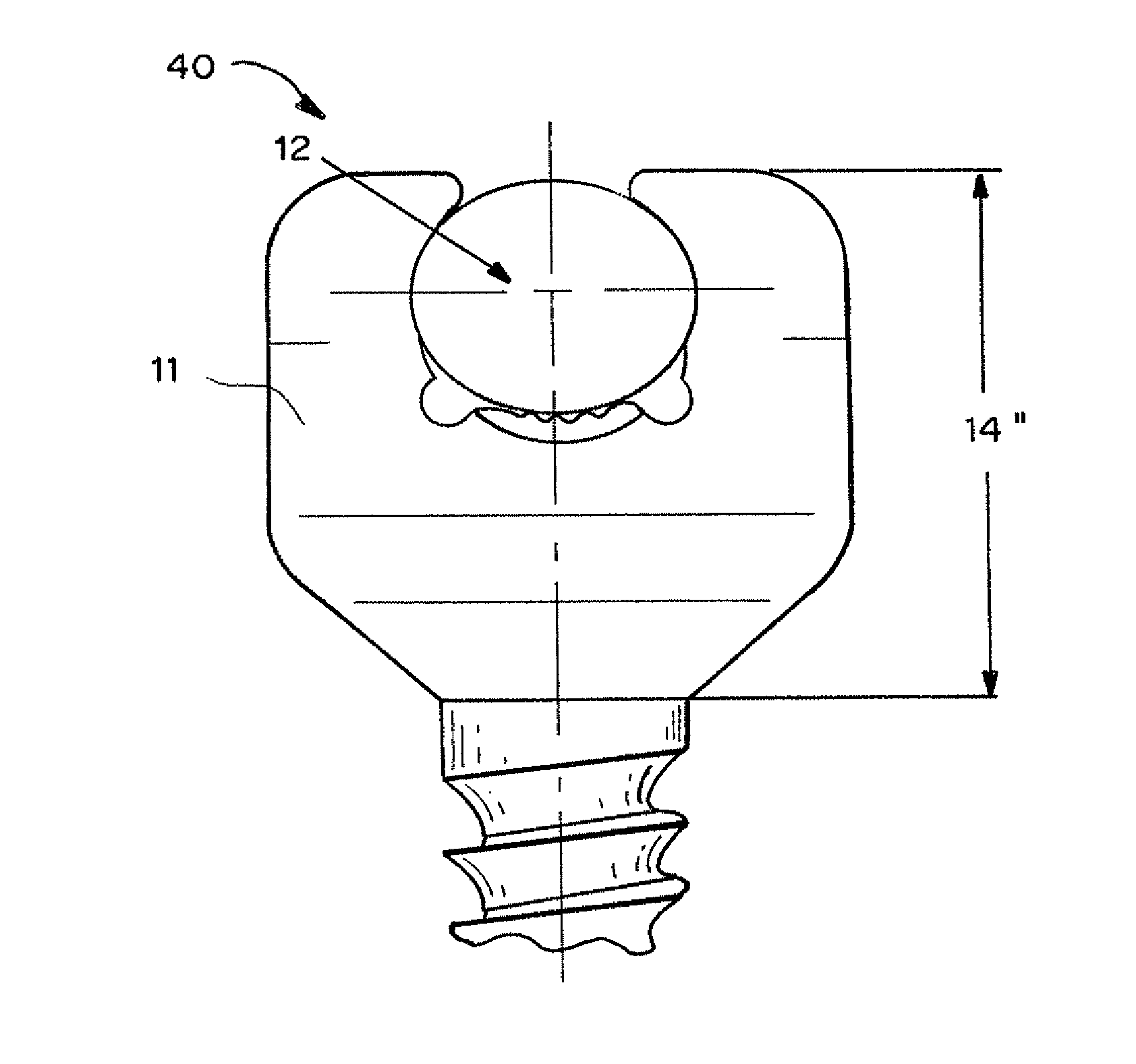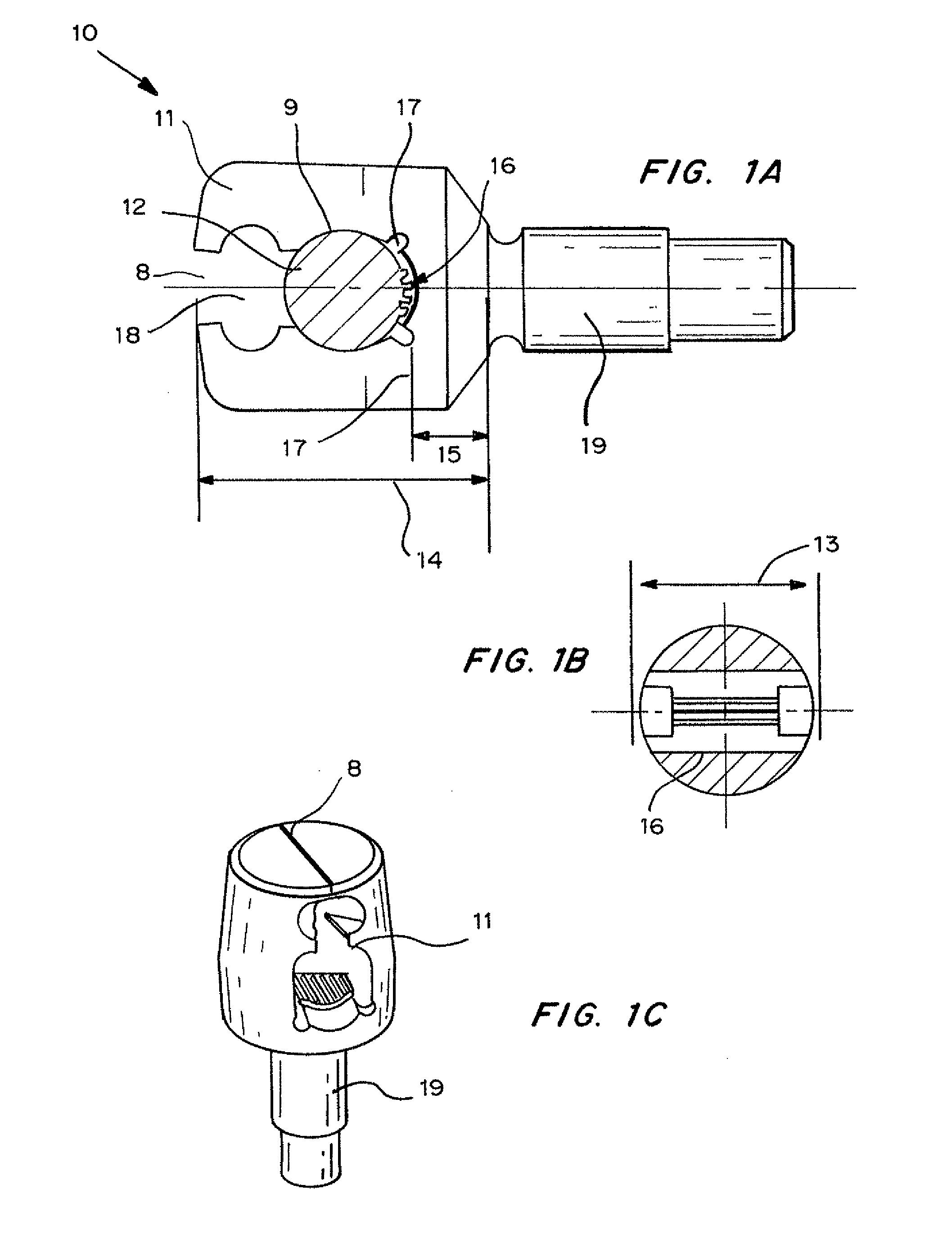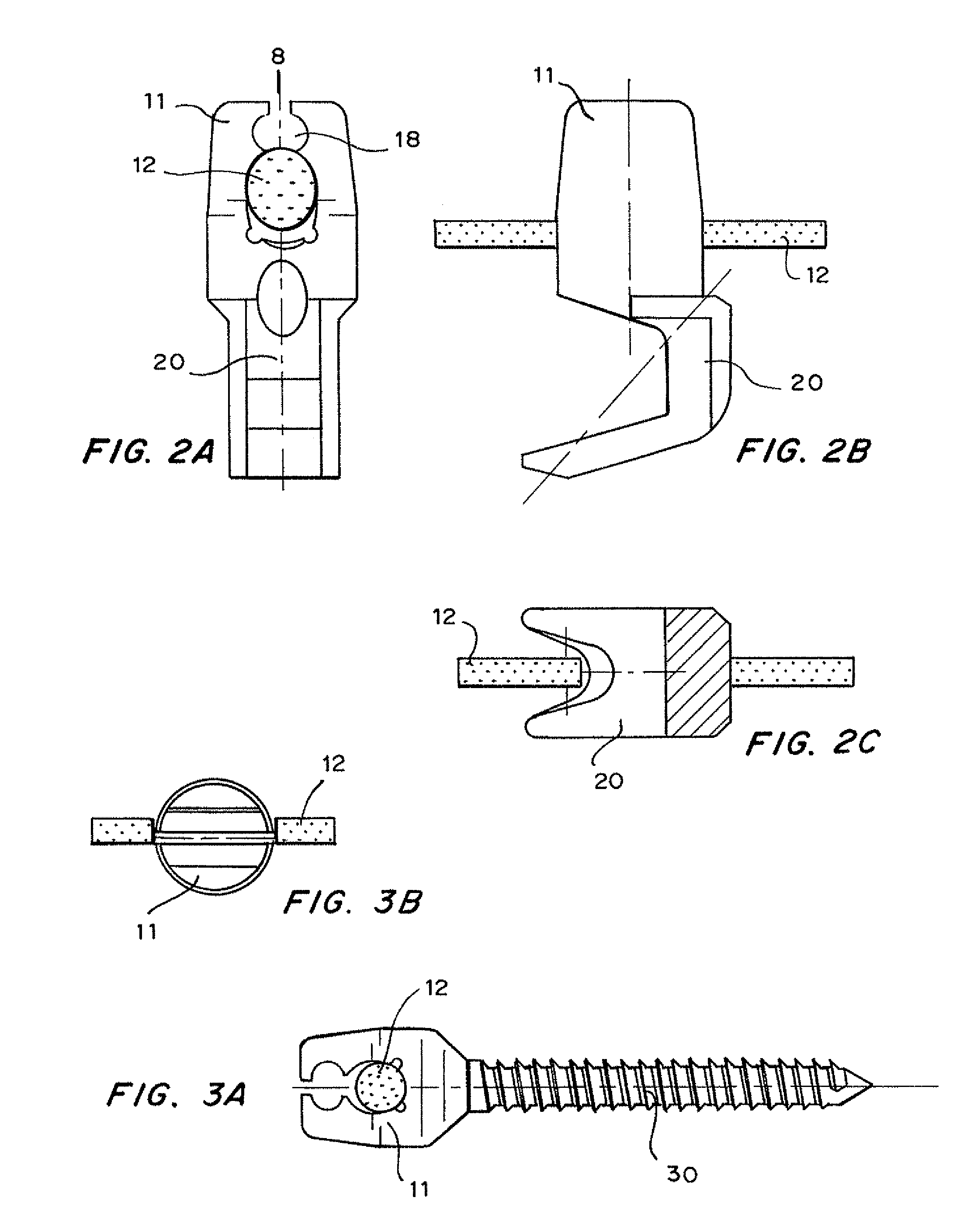Shape memory locking device for orthopedic implants
a memory locking and orthopedic implant technology, applied in the field of shape memory locking device for orthopedic implants, can solve the problems of affecting the stability of the spinal implant, the the expected wear between the supporting portion and the memory locking device, so as to prevent loosening and fretting
- Summary
- Abstract
- Description
- Claims
- Application Information
AI Technical Summary
Benefits of technology
Problems solved by technology
Method used
Image
Examples
example 1
Preparation of Sample
[0047]A shape memory locking device as described herein was made of near-equiatomic nickel titanium (Ti-50.8 wt % Ni) alloy. The mechanism then received a special heat treatment protocol ranging from 250° C. to 800° C., and from 30 minutes up to 60 minutes following the process described by Yeung et al., Materials Science and Engineering A 2004; 383(2):213-218. The locking temperature (above As) and unlocking (below As) temperatures of the memory locking device were programmed accordingly. The memory locking device can be closed when the ambient temperature is above the locking temperature, and loosened when the temperature is below the unlocking temperature.
[0048]For example, the shape memory locking device was first treated at 800° C. for 1 hr, followed by furnace cooling, and then treated at 500° C. for 0.5 hour, followed by water quenching. Eventually, its locking temperature was programmed at 35° C. or above, and the unlocking temperature was at 35° C. or b...
example 2
Comparative Testing
[0049]The performance of the memory locking device as depicted in FIGS. 1A-1C was tested against four conventional spinal couplings: 1. TSRH made of Ti-6Al-4V alloy (Medtronic, Sofamor Danek Company), 2. Moss Miami made of Ti-6Al-4V alloy (DePuy Spine, Johnson & Johnson Company), 3. CD-H made of Ti-6Al-4V alloy (Medtronic, Sofamor Danek Company) and 4. AO USS made of Ti-Al6-Nb7 alloy (Synthes® Company). The locking torque provided to secure the coupling device to the spinal rod was in accordance with the manufacturer recommendations.
Mechanical Testing
[0050]A Material Testing System (MTS) 858.02 Mini Bionix (USA) was used for mechanical testing of the samples. A customized testing jig for compression and torsion testing was attached to the MTS and connected to an external digital thermometer. The whole jig was immersed in a water bath to control the testing temperature. The ambient temperature was controlled by an external temperature-control heat circulator (Isote...
PUM
 Login to View More
Login to View More Abstract
Description
Claims
Application Information
 Login to View More
Login to View More - R&D
- Intellectual Property
- Life Sciences
- Materials
- Tech Scout
- Unparalleled Data Quality
- Higher Quality Content
- 60% Fewer Hallucinations
Browse by: Latest US Patents, China's latest patents, Technical Efficacy Thesaurus, Application Domain, Technology Topic, Popular Technical Reports.
© 2025 PatSnap. All rights reserved.Legal|Privacy policy|Modern Slavery Act Transparency Statement|Sitemap|About US| Contact US: help@patsnap.com



